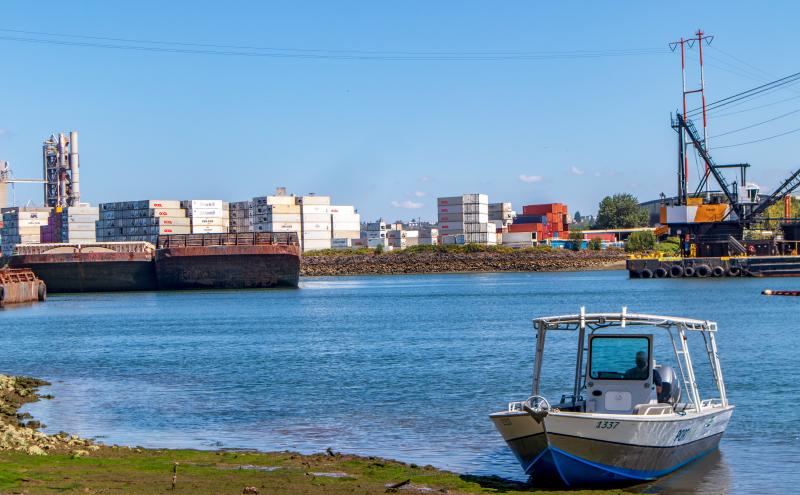
In 2022, the Port hired Seattle Jobs Initiative to identify in-demand, living-wage career pathways in the maritime and green jobs industries. Seattle Jobs Initiative analyzed the following two career pathways due to their current and projected employer demand, accessibility for entry-level workers, and earnings potential:
- Maritime Deck crews from Ordinary Sailors to Captains
- Maritime Engine crews from Wipers to Chief Mechanical Engineers
Regarding green jobs, the team conducted a literature review to identify the industrial sectors most likely to support greenhouse gas emission reduction efforts and receive public investment. Then, the team assessed the growth potential of entry-level occupations in these sectors and analyzed the following career pathways:
- Electricians, from Electrician Helpers/Apprentices to Master Electricians
- Heating, Ventilation and Air Conditioning (HVAC) Mechanics and Installers and Insulation Workers
Maritime and Green Career Pathways Report
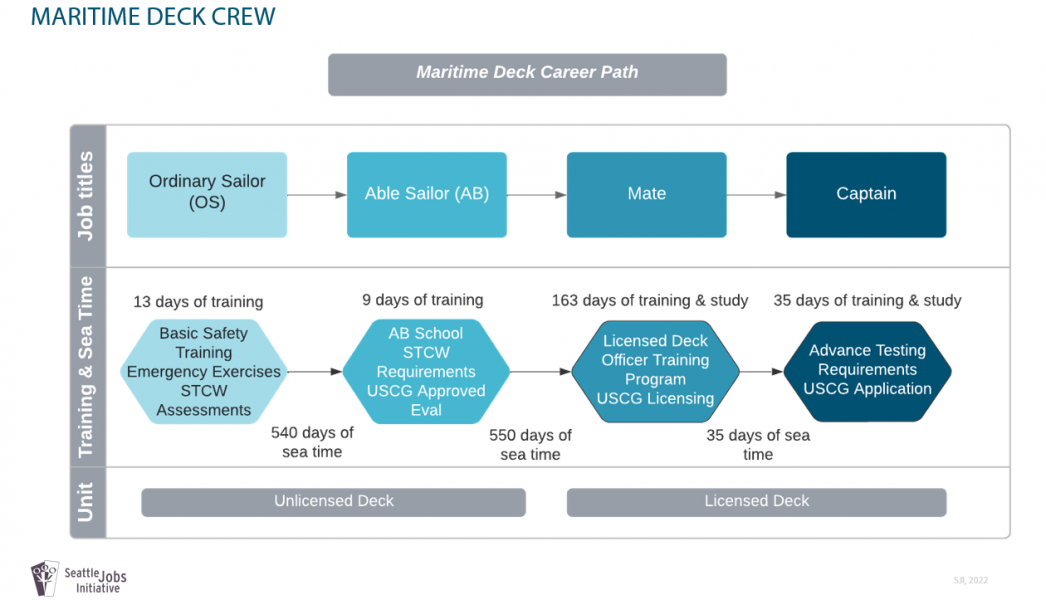
|
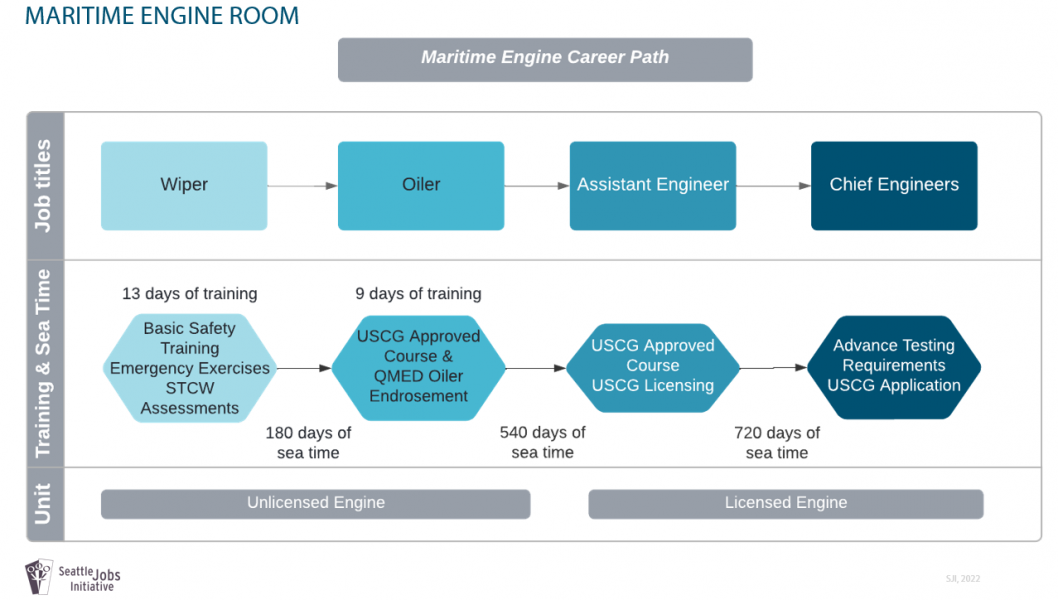
|
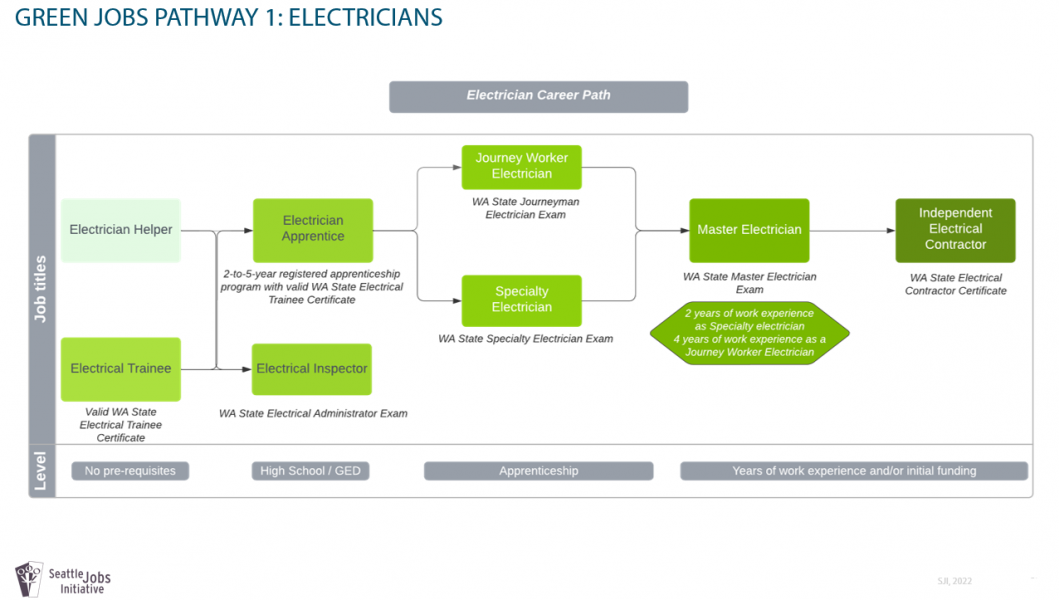
|
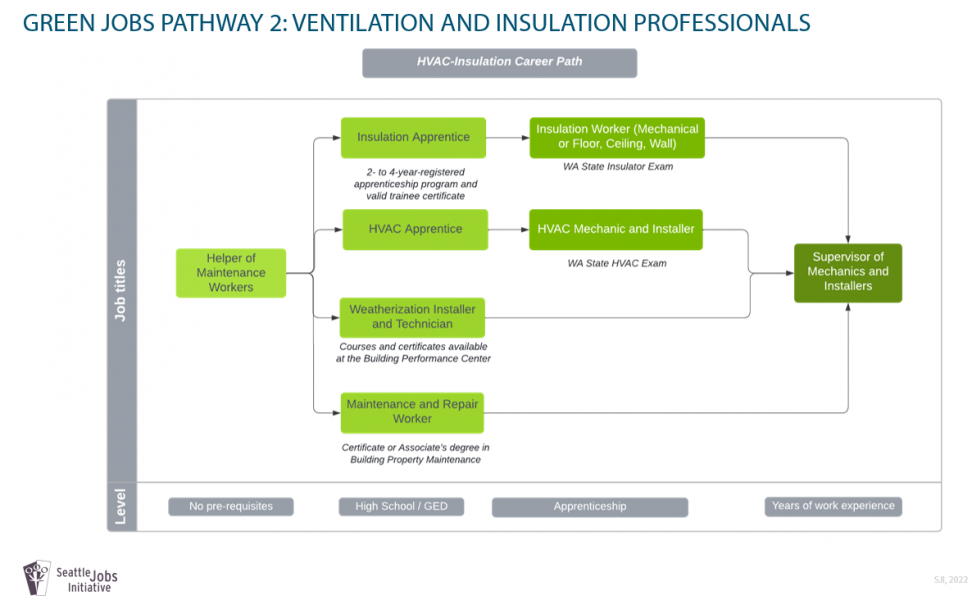
|

